
| Photos From Wyoming Tales and Trails This page: Worland. |
 |

| Photos From Wyoming Tales and Trails This page: Worland. |
 |
|
|
|
About This Site |
|
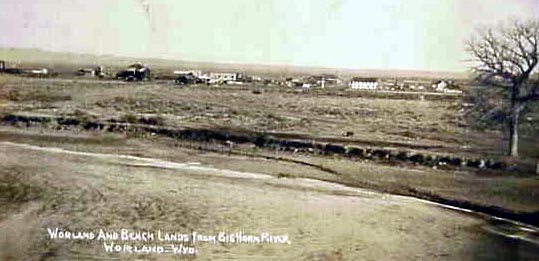 Worland, Wyo. and Big Horn Rivr As indicated on the previous page, the Bighorn Basin was the last area of the State to be settled, and Worland was just about the last area in the Basin to be settled. Worland was named after Charles Henry Worland, who in 1900 built a dugout saloon and stage station on the west side of the Bighorn River near the present site of the Worland Ranch. Worland, although born in Missouri, had been a stock grower in California before coming to Wyoming. Worland is one of those towns which from the beginning was inhabited by perennial optimists who, no matter what obstacles arose, pitched in, overcame them, and hoped for a better tomorrow. Thus, as discussed below,when the town found itself on the wrong side of the river, no problem. The town was put on skids and moved across the frozen river in the dead of winter. Plagued by bad roads, the residents took their shovels on the annual "Good Roads Day" and fixed the roads themselves, even taking the shovels to the top of the Big Horns to open the road to Buffalo when the snow finally melted. The town endured years of a flickery electrical system which seemed to always breakdown. But, nevertheless, there remained a spirit of optimism.
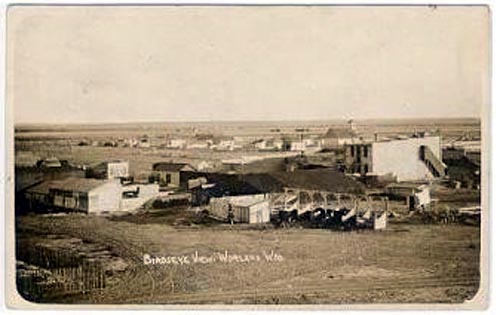 Worland, approx. 1910. In 1903, C. F. Robertson began the construction of an irrigation canal, the Hanover Canal, named after Hanover, Indiana, the hometown of the county prosecuting attorney, John Pollock Arnott. The Lower Hanover Canal was completed in 1906, the Bighorn Canal in 1907, and the Upper Hanover Canal in 1910. The effect of irrigation is indicated in that in 1900 less than 1,000 acres was under irrigation and this soon grew to over 40,000 acres.
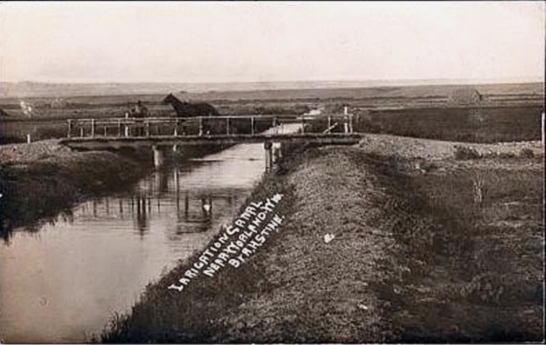 Irrigation canal near Worland approx. 1910
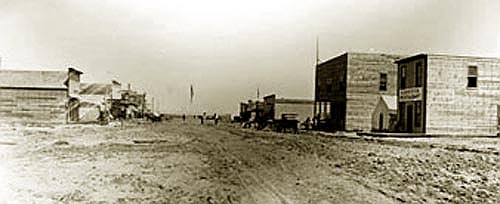 Worland, approx. 1906 By 1906 the Railroad had arrived, but, unfortunately, on the east side of the Big Horn River while the town was on the west side. Thus during the winter, the residents slid buildings and other possessions across the river on the ice and reestablished the town on the east bank. The first building, a saloon, was slid across on New Year's Day. By Feruary 8, 1906, the new town had three saloons and by the end of the month, Arthur G. Rupp (1867-1943) had commenced construction of a two-story mercantile establishment. Additionally, he constructed a smaller store on Big Horn Avenue known as "Rupp's Busy Corner." Previously on the Big Horn at Wellington or Welling three miles south of Manderson, Rupp operated a general store and corral and served as postmaster. Wellington was named after Rupp's son, Wellington Rupp. Among Rupp's customers was Butch Cassidy who visited the store following the Wilcox robbery and paid Rupp $20.00. Rupp later was a partner for a short time in the Worland Grit.
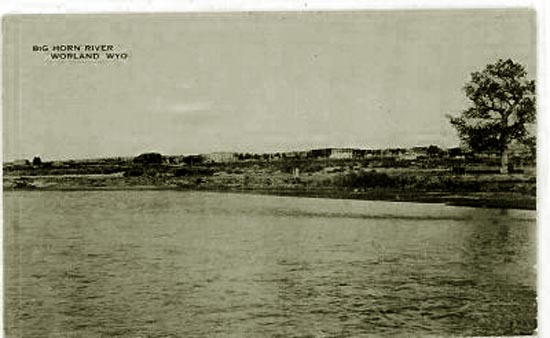 Worland from across the Big Horn River, approx. 1915.
Next page, Worland continued. |